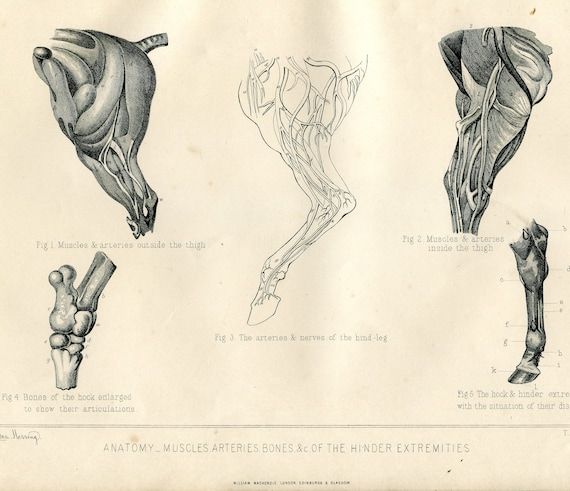To study horses and their skeletal and muscular makeup, you need to focus on anatomy and physiology, incorporating dissections, X-rays, and biopsies, as well as utilizing imaging techniques such as MRI and CT scans. Additionally, studying horse locomotion and observing their movements in various gaits is crucial for understanding their muscular and skeletal systems.
By combining these approaches, you can gain a comprehensive understanding of the structure and function of horses’ bodies, enabling you to care for them better and enhance their performance.
Understanding The Anatomy Of Horses
The study of horses’ skeletal and muscular makeup is of utmost importance in comprehending the intricacies of their anatomy. By examining their skeletal system, we can gain insights into their bones, joints, and the role of the spine. Horses rely on their skeletal structure for stability, locomotion, and overall body support. Understanding the functions of different bones and the movements facilitated by joints allows us to appreciate the remarkable agility and strength horses possess.
The muscular system is another vital component to study. Horses have various types of muscles that play essential roles in movement. Muscles enable horses to gallop, trot, and perform intricate maneuvers. Additionally, muscle development significantly impacts a horse’s ability to excel in different activities, such as racing or jumping. By comprehending the relationship between the skeletal and muscular systems, we can gain a holistic understanding of how a horse’s body functions and the importance of maintaining its health and fitness.
| Key Components of Horses’ Anatomy | |||
|---|---|---|---|
| Skeletal system | Bones and their functions | Joints and their movements | Role of the spine |
| Muscular system | Types of muscles in horses | Functions of muscles in movement | Importance of muscle development in horses |
Tools And Techniques For Studying Horses’ Anatomy
Horses’ anatomy can be studied using different tools and techniques that allow researchers to understand their skeletal and muscular makeup. Imaging technologies play a crucial role in this process. X-rays enable the visualization of bones and joints, providing valuable information about any fractures or abnormalities. Ultrasound can reveal soft tissue structures, such as muscles and tendons. More advanced imaging techniques like CT scans and MRI scans offer detailed and three-dimensional views of the horse’s internal structures. Dissection and cadaver studies allow for a hands-on exploration of the anatomy, providing insight into the intricate relationships between different body parts. External examinations and palpation also play a significant role in studying horses’ anatomy, allowing researchers to assess the condition of the musculoskeletal system. By utilizing a combination of these tools and techniques, researchers can gain a comprehensive understanding of horses’ skeletal and muscular makeup.
Studying Horses’ Skeletal Makeup
Horses have a fascinating skeletal and muscular makeup that provides them with strength, agility, and endurance. Understanding the horse’s skeletal structure is crucial for studying their anatomy and physiology. By identifying the major bones of a horse’s body, we can gain insight into their form and function. The horse’s skeletal system can be divided into two parts: the axial skeleton and the appendicular skeleton.
The axial skeleton includes the skull, vertebrae, ribs, and sternum, which provide structural support and protection for vital organs. On the other hand, the appendicular skeleton consists of the limbs (forelimbs and hindlimbs) along with the associated bones, such as the scapula, humerus, femur, and tibia.
It is interesting to note that different horse breeds may exhibit skeletal variations, which contribute to their unique characteristics. For instance, certain breeds may have a more compact or elongated skeletal structure.
Additionally, studying the horse’s skeletal system can also help in aging horses, as skeletal analysis provides valuable information about their development and growth. For a detailed overview of the horse’s skeletal and muscular makeup, please refer to the table below:
| Major Bones | Axial Skeleton | Appendicular Skeleton |
|---|---|---|
| Skull | Vertebrae | Forelimbs |
| Ribs | Ribs | Hindlimbs |
| Sternum | Sternum | Scapula |
Examining Horses’ Muscular Makeup
Examining Horses’ Muscular Makeup
Horses have a complex skeletal and muscular structure that is crucial to their locomotion and overall performance. By understanding their major muscle groups, we can gain insights into their movement and athletic abilities.
Muscle function and locomotion: The muscles in horses play a vital role in their movement. They allow the horse to walk, trot, canter, gallop, jump, and perform various other activities.
Role of specific muscles in movement: Different muscles have specific functions in a horse’s locomotion. For example, the gluteal muscles aid in propulsion, while the quadriceps help in extending the leg.
How muscles work together: Horses’ muscles work together in a coordinated manner to generate power and balance during movement.
Factors influencing muscular development in horses: Several factors affect muscular development in horses, including exercise and conditioning, nutrition and diet, and genetics.
Muscle disorders and injuries in horses: Horses are prone to muscular disorders and injuries, such as strains, tears, and muscle fatigue. Proper care and management are essential to prevent these issues.
Understanding the skeletal and muscular makeup of horses is crucial for horse owners, trainers, and veterinarians. By focusing on muscle development, exercise, and nutrition, we can enhance a horse’s performance and overall well-being.
Integrating Anatomy Study Into Equine Health And Performance
Integrating anatomy study into equine health and performance can have practical applications in various aspects of horse care and training. Understanding the skeletal and muscular makeup of horses is essential for preventing and managing injuries. By identifying weak areas, equine professionals can devise strategies to strengthen and protect vulnerable structures. In addition, knowledge of horse anatomy helps in designing effective training programs, ensuring the exercises target specific muscle groups and promote balanced development.
Studying horse anatomy also aids in assessing horse conformation, which refers to the body structure of a horse. A thorough understanding of equine anatomy allows for evaluating the horse’s symmetry, balance, and overall physique. This information is crucial when selecting horses for specific disciplines or determining their suitability for particular activities.
Furthermore, an in-depth understanding of horse anatomy has a significant impact on equine sports and performance. By recognizing the relationships between anatomy and biomechanics, trainers and riders can enhance performance and optimize athletic potential. Moreover, a comprehensive grasp of horse anatomy allows for effective communication and collaboration with veterinarians and other equine professionals.

Credit: www.etsy.com
Frequently Asked Questions Of How To Study Horses And Their Skeletal And Muscular Makeup
Q: What Are The Major Bones In A Horse’s Skeletal System?
A: The major bones in a horse’s skeletal system include the skull, shoulder blade, ribs, spine, pelvis, and leg bones. These bones provide structure, support, and protection for the horse’s organs and muscles.
Q: How Does A Horse’s Skeletal System Support Its Movement?
A: A horse’s skeletal system supports its movement by providing a framework that muscles can attach to and work against. The bones of the legs and spine act like levers, allowing for powerful and efficient movement. The joints in the skeletal system also allow for flexibility and range of motion.
Q: What Muscles Are Responsible For A Horse’s Movement?
A: The muscles responsible for a horse’s movement include the shoulder muscles, back muscles, abdominal muscles, and leg muscles. These muscles work together to provide power, coordination, and control during various gaits and movements. The development and conditioning of these muscles are important for a horse’s overall performance.
Conclusion
To effectively study horses and their skeletal and muscular makeup, it is crucial to understand their anatomy and how it influences their biomechanics. By delving into this realm, horse enthusiasts and professionals can enhance their knowledge and develop better strategies for training, care, and overall horse management.
A comprehensive understanding of equine anatomy is vital to optimize their performance, prevent injuries, and ensure their well-being. So, dive into the fascinating world of studying horses and unlock the secrets hidden beneath their strong and graceful exteriors.

